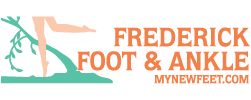Although I have completed a few half marathons I occasionally walk for exercise. I feel that walking is an underrated form of exercise. Many diseases that affect people today both physical and mental can be warded off with the help of daily walking. Cardiovascular workouts should be incorporated into everyone’s daily activities but the type and intensity of the workout should be modified to meet each person’s capabilities. Read the 6 health benefits below to get your motivated to start your walking routine.
- Diabetes
According to the CDC more than 100 million Americans have Diabetes. Studies have shown that walking benefits both Type 1 and Type 2 diabetics by aiding in glucose control. In one study of 201 type 2 diabetics, each participant added 2,600 steps to their daily activity and had an average of 0.2% decrease in their Hemoglobin A1c. Diabetes Care also published an article that pre-diabetics can reduce their chances of developing the disease by just walking for 20 minutes daily.
- Heart disease
Heart disease is a large category of conditions that plague the function of the heart. Some symptoms of heart disease include shortness of breath, chest pain, irregular heart beats and more. A Harvard Medical School study showed that walking reduced the occurrence of heart disease by 30% by including 2.5 hours of walking a week.
- Joint pain
Joint pain often happens because of arthritis, which is inflammation in the joint. Walking builds muscle and this helps to support the joints relieving some of the pressure and pain. Additionally, with movement in the joints the synovial fluid is able to move around the joint surfaces to lubricate and nourish the area. Using your joints through exercise also protects the bone density, the bone density increases to meet the demands of the workout.
- Cancer
The American Cancer Society published a study that there was a 14% reduction in breast cancer diagnosis for those who walked 7 or more hours a week versus their less active counterparts. A second study completed by Harvard University assessed women who walked 3 to 5 hours a week were 54% less likely to end up with breast or uterine cancer.
5. Immune support
Do you want fewer sick days? Taking up walking during the week for a minimum of 20 minutes will leave you with 43% fewer sick days in comparison to those exercising once a week or less. Research from Appalachian State verified that 30 minutes of walking a day can increase the number of immune cells that help combat future sickness.
- Mental Improvements
Not only does walking help with physical ailments but with mental diseases as well. The University of California found that memory changes due to advanced age decreased 17% in those that walked 2.5 miles or more daily. In the same study those who walked less than ½ mile daily had a 25% decline in memory retention. An additional study found that those who walked ¼ of a mile per day were 50% less likely to develop dementia and Alzheimer’s disease. The memory improvements can be attributed to exercises ability to help the body retain the same brain size.
Remember to always consult your doctor before starting a new workout routine. So, keep counting your steps and reaching your goals for a healthier and happier 2018!
